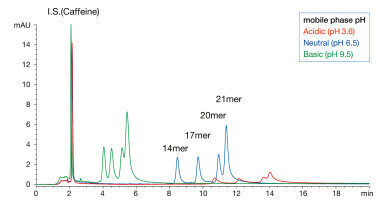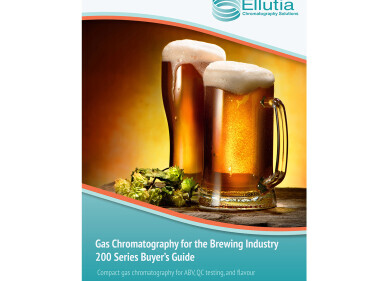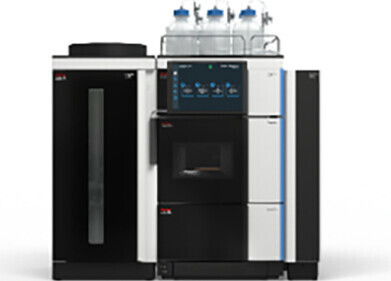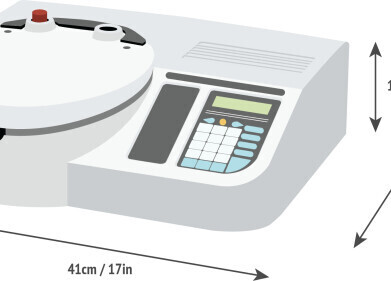-
 Figure 1: Analysis of DNA oligonucleotides using the bioinert coated YMC-Accura Triart Diol-HILIC (blue) and the corresponding stainless-steel column (grey).
Figure 1: Analysis of DNA oligonucleotides using the bioinert coated YMC-Accura Triart Diol-HILIC (blue) and the corresponding stainless-steel column (grey). -
 Figure 2: Influence of mobile phase pH on the separation of an all PO RNA mixture using an acidic (red), a neutral (blue) and basic pH (green).
Figure 2: Influence of mobile phase pH on the separation of an all PO RNA mixture using an acidic (red), a neutral (blue) and basic pH (green).
Chromatography
Determination of optimum method parameters for the analysis of oligonucleotides via HILIC
Sep 29 2023
Due to the highly polar nature of oligonucleotides, hydrophilic interaction liquid chromatography (HILIC) is ideally suited for their characterisation. In this technical note, the separation of mixtures of short DNA (dT10, dT15 and dT20) and short RNA oligonucleotides (14, 17, 20 and 21mer) was used to examine important parameters for method optimisation in HILIC mode.
Influence of hardware
Oligonucleotides can be irreversibly adsorbed onto the metallic surface of the column hardware, due to their electron-rich backbone. The use of a bioinert coated YMC-Accura Triart Diol-HILIC column shows better peak shapes and higher sensitivity due to virtually no adsorption compared to the corresponding stainless-steel column (see Figure 1).
Influence of sample solvent and mobile phase pH
The influence of the sample solvent on peak shape especially for early eluting peaks is significant. As water is the strong eluent in HILIC mode, the ratio of organic solvent must be the same or higher than the initial gradient composition. The analysis of the DNA oligonucleotides diluted with a lower organic ratio (40%) shows that a higher injection peak as well as early eluting additional peaks occurs.
The mobile phase pH has a significant effect on retention and peak shape. Figure 2 shows that oligonucleotides are more strongly retained when the pH becomes lower. But with an acidic pH massive adsorption of the oligonucleotides occurs. Using the basic mobile phase, the retention is the lowest, but the resolution is visibly reduced, so that the neutral mobile phase pH shows the best results for this mixture.
Summary
These findings result in the following recommendations:
- Bioinert hardware provides optimum peak shapes and high recovery
- High organic ratio of the sample solvent is important
- Neutral to basic mobile phase pH is recommended
You will find further information about oligonucleotide analyses in YMC’s Oligonucleotide columns brochure.
Digital Edition
Lab Asia Dec 2025
December 2025
Chromatography Articles- Cutting-edge sample preparation tools help laboratories to stay ahead of the curveMass Spectrometry & Spectroscopy Articles- Unlocking the complexity of metabolomics: Pushi...
View all digital editions
Events
Jan 21 2026 Tokyo, Japan
Jan 28 2026 Tokyo, Japan
Jan 29 2026 New Delhi, India
Feb 07 2026 Boston, MA, USA
Asia Pharma Expo/Asia Lab Expo
Feb 12 2026 Dhaka, Bangladesh


















